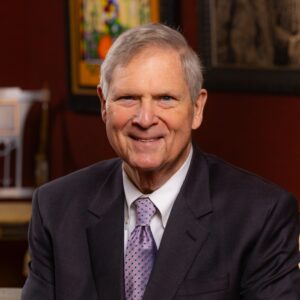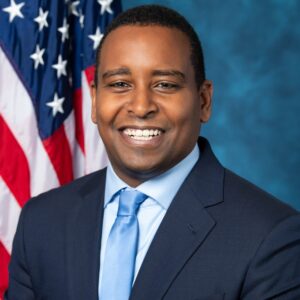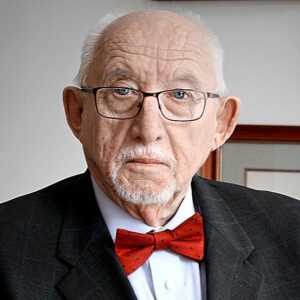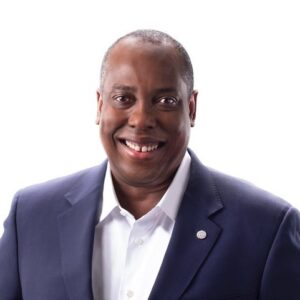Disrupting the Path to School Violence: Q&A with Dr. Jason Glass
By Berrick Abramson

To dig into some of these questions, I talked with somebody who leads thousands of educators and other professionals who are confronting these challenges every day. Dr. Jason Glass is superintendent of Jeffco Public Schools in Colorado — a community for whom the scars of gun violence are all too real. The families and teachers in the suburban district of 86,000 students were thrust into the national spotlight when 12 students and one teacher were murdered and 24 more were injured at Columbine High School in 1999.
* * *
Q: Dr. Glass, thank you for your time and willingness to engage. Before we dig into some questions, anything you’d like to say to the families and educators in Parkland, Florida?
Jason Glass: The pain and loss that community is experiencing is unimaginable. There is some level of comfort in getting up from such an event and continuing on — but even this requires a tremendous amount of courage and compassion and we should acknowledge and support that happening in Parkland. The Marjory Stoneman Douglas High School shooting will forever change that community, just as the Columbine shooting changed Jeffco. The difficult truth is that the community will never really be the same, but we can grieve, heal, and grow.
Q: There are a lot of conversations about gun laws and building security, but today I’d like to elevate the discussion about some of what is leading to the need to even have those debates and what can be done in schools — and homes — to interrupt that.
JG: It all begins with prevention. If we can identify students and people in our community who are struggling with isolation or having suicidal or homicidal thoughts and sharing those, we can then intervene before things escalate into an act of violence. School and community mental health and counseling professionals are overwhelmed with their workloads. Loved, well-adjusted, and included young people do not become mass murderers — our primary focus should be on how we ensure that outcome for every child.
But, we should not rely on this alone. We also need “if you see something, say something” to extend beyond airports and train terminals. Several school mass murderers have provided plenty of warning signs, even going as far as boasting on social media that they were considering an attack. We can no longer dismiss these as juvenile jokes. Just as one cannot say “fire” in a theater or “bomb” on a plane, we must have consequences and supports in place when someone says they are going to shoot up a school.
I also think we can do more in terms of prevention when it comes to better securing our school buildings. While architectural and facilities changes are by no means fail-safe, they can offer additional levels of protection against unauthorized entry, added monitoring capabilities, and provide important delays which give law enforcement precious minutes or seconds to respond. This will require us to re-imagine our schools through an uncomfortable and even terrifying lens, and it will require the investment of substantial dollars to make such changes.
These layers of additional support and prevention help us lower the probability that we are dealing with the horror of an active shooter in a school — but we must prepare for that possibility as well.
Q: What are some of the systems that can be put in place or the tools and strategies educators can employ to identify students who may be on a path that could lead to violence against their peers or teachers?
JG: As I mentioned earlier, there are usually warning signs — some of which may have been manifesting for years — before an act of violence takes place. Regrettably, we now can evaluate enough school shooters that we can develop a profile of these individuals. Loners, outcasts, abused or neglected upbringings, access to and fascination with weapons, a macabre interest, and an escalating history of violence — all of these form an all-to-familiar pattern of these individuals. One of the things I would like to see come forward is a set of scientifically-researched warning signs that professionals and even families can look for as well as procedures and guidelines around interventions and supports.
Q: Is there a different role for adults in a school other than the teachers like coaches, administrators, or others?
JG: Everyone working in schools has an important role to play in building relationships with students and creating a safe environment for learning. So, I wouldn’t say that the role of non-teaching staff in a building is all that different in that all the professionals working with students (regardless of their role) have a responsibility to build quality relationships. Students form bonds with teachers, but also bus drivers, custodians, principals, school resource officers — all sorts of people who work in schools. Every one of us has the opportunity to build a bridge and reach a student.
Q: What role do students have in this and what message would you want to give to them or to their teachers about what students can do?
JG: I believe students must be an important part of the solution. Again, we must start with prevention as our first line of defense. Included, befriended, and well-adjusted young people do not become school shooters. We must support our students in creating opportunities and cultures of inclusion. Both structured and unstructured interactions provide these opportunities, but we need to be vigilant in schools for those who are left out and left behind and consider how we can bring them along.
Students are also important in reporting other students in crisis or who are threats. In many cases, homicidal or suicidal ideations are shared between students. Even if they are in jest (albeit poor jokes), we need to have those reported and investigated. We need students to understand that if they share that a friend or classmate is considering violence toward themselves or others, it is not snitching or betrayal to say something — it may save lives. Finally, we need students to be prepared with what to do in the unlikely event of school violence. Taking the standard response protocol (lockout, lockdown, shelter, evacuate) seriously and knowing what to do and when to do it are critical steps that can save lives.
Q: I read so many inspiring stories about things teachers do — like the grade school teacher who asks kids to write down who they’d like to sit with next week and then uses those to look for patterns. For most, these aren’t things the teacher is told to do or trained formally to do, it’s just who they are. What are some things teachers can do to create a culture of caring and openness in the classroom, to minimize the instances of students feeling left out, bullied, or marginalized? What do you think are the roles of school or district leaders encouraging things like this?
JG: I feel that creating opportunities for students to collaborate, engage with each other in important work, and to intentionally create inclusive cultures, programs, and activities is important beyond just a school safety aspect. We need to be doing more of these things in order to prepare students for life. We’re asking our teachers in Jeffco to “transform the student task” as the key driver in their work. By that, we mean to transition from routine, repetitive, fact-driven, and isolation-based tasks into complex, dynamic, skills-based, and collaborative tasks. In addition to supporting students in breaking down barriers and reducing “otherness” in how we see and interact with each other, we believe these engaging tasks and experiences will also better prepare our students for the future they will inherit.
Q: What kind of resources would you or your school leaders need to provide the training necessary for the things we’re talking about? Certainly it begins in teacher prep but that’s just the start. Who does this fall to on an ongoing basis?
JG: Creating inclusive cultures and engaging student experiences is no one-and-done activity. Nor can it be effectively delivered once in a college class or in a district-delivered professional development seminar. Bringing all kids in, helping them find their interests and passions, and engaging them in relevant and important tasks is the most important work of educators in our time. Unless we can succeed in this effort to profoundly change student experiences, nothing else really matters. To do this, we must elevate inclusive and engaging student experiences as “the main thing” in all that we do and restructure educator collaboration time, professional learning time, curriculum supports, and school vision/direction accordingly. Unless we are changing the student experiences, and profoundly, we are just scratching at the surface when it comes to pulling students in and making community, connections, and learning our priorities.
Q: When you and I were growing up, we had to find the nerve to write a note and slip it into somebody’s locker. The internet and smart phones have changed things. Today, a sense of belonging (or not) is often a click away, spontaneous thoughts have an audience of hundreds or thousands in seconds and a hundred thumbs up or thumbs down can come in minutes. What’s your take on the good and bad of students’ use of social media and the dominant role things like Instagram, SnapChat, and other apps play in kids’ daily lives?
JG: A lot of people pontificate on whether or not social media has been good or bad for our youth. For me, these discussions are mostly irrelevant. Electronic social media is probably here to stay and the forms it will take on are more likely to expand than retreat. There are certainly positives — there are more ways to connect and share with other people, all across the world, than at any time in human history. From a learning and human interaction standpoint, that’s incredibly exciting and we should embrace this shift that has already been underway for several years. However, we also have a responsibility (as educators) to prepare our students in how to engage in this new world. The digital landscape has dark corners, bad actors, traps, and con artists. We need to graduate media-savvy students who understand and can thrive in this environment.
Q: Have you seen good examples or have thoughts about how social media can be a useful tool for educators and other school personnel identifying or confronting these issues?
JG: Social media has proven a valuable tool in helping to identify students in crisis or who may be threats. Here in Jeffco, when someone posts that they are going to shoot up a school, that person is going to have law enforcement on them within the hour and a full investigation with the cooperation of school officials will be underway. Social media has also proven a benefit in sharing information. Like it or not, we can get messages out quickly through social media networks. Sometimes this is a challenge because people often will share (wittingly or unwittingly) misinformation or uncorroborated rumors. However, as a school system we can also monitor that occurring and work to provide accurate and timely information in response. We’ve also been successful at engaging our community in thoughtful and deep discussions via social media on issues relating to schools safety — but also other issues of concern to our schools and community. It is the world we live in and the dominant way in which people connect and our school systems must adapt and learn to work these systems to our advantage in connecting with our community.
Q: What suggestions would you have for kids who are experiencing or witnessing bullying, depression, or anger? Are there individual actions students can take, programs they can join, or things they can do?
JG: We’ve seen a large increase the past couple of years in students reporting suicidal ideation or threats. It could well be that there is something societal driving these increases, but it is also likely the case that schools now have systems of support where these experiences can be reported and students can get help. On the balance, this is a good thing — we can connect interventions and support where there is crisis. As school officials, we have a responsibility to make sure these systems are in operation, that students understand their purpose and know how to use them, and that they follow-through when an issue is identified. For students, they need to know these supports are there for them — and if they (or someone they know) is in crisis, they can get help and support.
Q: What advice would you give to parents about engaging with their own kids who may be dealing with or witnessing others with anger, loneliness, or depression that could lead to violent or harmful behavior?
JG: Do not suffer alone. These issues are complex, often deep-rooted, and are difficult to talk about for a number of reasons. Parents love their children, but there are lots of family dynamics that make talking about these sorts of things at home challenging. Fear of punishment, fear of judgement, fear of disappointment — all of this comes into play. Parents need to know that they can and should reach out for help from professionals in our school systems and mental health systems. Parents also need to know that it’s part of their job to advocate and stand up for their kids in helping them get what they need. The best school systems and communities I know are places where parents demand quality for their students and they usually get it when they do. As school leaders, we have to work to not be threatened by this advocacy. It affords us an opportunity to self-examine and get better — and we can and should.
Dr. Jason Glass is superintendent and chief learner of Jeffco Public Schools in Colorado. He previously served as superintendent of Eagle County Schools and as Iowa’s Director of Education and has worked as a university instructor and high school teacher in Kentucky. Dr. Glass holds a bachelor’s degree in political science and master’s degrees in education and political science from the University of Kentucky. He earned his doctorate in education from Seton Hall University.
Berrick Abramson is Senior Policy Director at the Keystone Policy Center where he leads our education practice. He has more than 20 years of experience in education and public policy. Berrick has advised state and local officials, legislators, community leaders, and stakeholders nationally on policies and systems relating to career readiness, educator preparation, educator licensure, state accountability systems, school turnaround frameworks, career ladder structures, and educator compensation systems.


 Effective March 1, 2025, Thomas J. Vilsack, former United States Secretary of Agriculture and Governor of Iowa, became the first Chief Executive Officer for the World Food Prize Foundation. In this new role, Governor Vilsack is focusing on expanding the Foundation’s global network, and will further position the Foundation as a leader in addressing global food and nutrition insecurity, continuing his lifetime of public service.
Effective March 1, 2025, Thomas J. Vilsack, former United States Secretary of Agriculture and Governor of Iowa, became the first Chief Executive Officer for the World Food Prize Foundation. In this new role, Governor Vilsack is focusing on expanding the Foundation’s global network, and will further position the Foundation as a leader in addressing global food and nutrition insecurity, continuing his lifetime of public service. Shelby Coffey III is a distinguished journalist, media executive, and thought leader whose career has helped shape the landscape of American news and public discourse. Over several decades, Coffey has held some of the most influential roles in journalism, including serving as editor of the Los Angeles Times, executive vice president of ABC News, and deputy managing editor of The Washington Post. His editorial leadership extended to key roles as president of CNN Financial News, editor of the Dallas Times Herald, and U.S. News & World Report.
Shelby Coffey III is a distinguished journalist, media executive, and thought leader whose career has helped shape the landscape of American news and public discourse. Over several decades, Coffey has held some of the most influential roles in journalism, including serving as editor of the Los Angeles Times, executive vice president of ABC News, and deputy managing editor of The Washington Post. His editorial leadership extended to key roles as president of CNN Financial News, editor of the Dallas Times Herald, and U.S. News & World Report. Jerry Steiner has spent 40 years involved in agriculture following growing up on a Wisconsin dairy farm. He began his career with Monsanto, in multiple business leadership roles. From 2003-2013 he served as a member of the Executive team, as the company’s Executive Vice President of Sustainability and Corporate Affairs. He led the company’s global Government, Public and Industry Affairs teams across the 70 countries where Monsanto conducts business. This experience got Jerry connected to the Keystones centers work in agriculture. Key among his responsibilities were shaping the company’s public policy and building partnerships aimed at helping farmers around the world produce more food, while conserving valuable resources like water and energy. Two unique partnership that developed under his leadership were drought tolerant corn with 5 African countries, CIMMYT and the Gates foundation, and a building a sustainable business model in Brazil with the value chain leading to significant multi-company investment and soybean varieties that can protected themselves.
Jerry Steiner has spent 40 years involved in agriculture following growing up on a Wisconsin dairy farm. He began his career with Monsanto, in multiple business leadership roles. From 2003-2013 he served as a member of the Executive team, as the company’s Executive Vice President of Sustainability and Corporate Affairs. He led the company’s global Government, Public and Industry Affairs teams across the 70 countries where Monsanto conducts business. This experience got Jerry connected to the Keystones centers work in agriculture. Key among his responsibilities were shaping the company’s public policy and building partnerships aimed at helping farmers around the world produce more food, while conserving valuable resources like water and energy. Two unique partnership that developed under his leadership were drought tolerant corn with 5 African countries, CIMMYT and the Gates foundation, and a building a sustainable business model in Brazil with the value chain leading to significant multi-company investment and soybean varieties that can protected themselves. Jennifer Morris is the Chief Executive Officer of The Nature Conservancy, leading a team of nearly 6,000 staff working in more than 80 countries and territories tackling the dual crises of the
Jennifer Morris is the Chief Executive Officer of The Nature Conservancy, leading a team of nearly 6,000 staff working in more than 80 countries and territories tackling the dual crises of the  Congressman Joe Neguse represents Colorado’s 2nd District in the U.S. House of Representatives. He was elected to his first term in November 2018, becoming the first Black Member of Congress in Colorado history. In December 2022, Rep. Neguse was elected by his colleagues to serve as Chair of the Democratic Policy and Communications Committee (DPCC), becoming the first Coloradan to serve in a senior elected leadership role in the House in over 85 years. He serves on the Natural Resources and Judiciary Committees, and was also appointed by House Minority Leader Hakeem Jeffries to serve as one of four Democrats on the prestigious Rules Committee. Rep. Neguse serves as Ranking Member on the House Subcommittee on Federal Lands, which he previously Chaired in the 117th Congress.
Congressman Joe Neguse represents Colorado’s 2nd District in the U.S. House of Representatives. He was elected to his first term in November 2018, becoming the first Black Member of Congress in Colorado history. In December 2022, Rep. Neguse was elected by his colleagues to serve as Chair of the Democratic Policy and Communications Committee (DPCC), becoming the first Coloradan to serve in a senior elected leadership role in the House in over 85 years. He serves on the Natural Resources and Judiciary Committees, and was also appointed by House Minority Leader Hakeem Jeffries to serve as one of four Democrats on the prestigious Rules Committee. Rep. Neguse serves as Ranking Member on the House Subcommittee on Federal Lands, which he previously Chaired in the 117th Congress. Llewellyn King was born in Southern Rhodesia, now Zimbabwe. He went into journalism as soon as he turned 16, stringing for Time magazine and United Press in Africa.
Llewellyn King was born in Southern Rhodesia, now Zimbabwe. He went into journalism as soon as he turned 16, stringing for Time magazine and United Press in Africa. Steven Williams is the Chief Executive Officer of PepsiCo North America, overseeing a more than $48 billion business that spans PepsiCo’s Foods and Beverage operating units. His leadership encompasses more than 125,000 associates and over 900 locations across the U.S. and Canada. Steven joined PepsiCo in 2001 as part of PepsiCo’s acquisition of the Quaker Oats Company, which he joined in 1997, and has held leadership positions of increased responsibility since.
Steven Williams is the Chief Executive Officer of PepsiCo North America, overseeing a more than $48 billion business that spans PepsiCo’s Foods and Beverage operating units. His leadership encompasses more than 125,000 associates and over 900 locations across the U.S. and Canada. Steven joined PepsiCo in 2001 as part of PepsiCo’s acquisition of the Quaker Oats Company, which he joined in 1997, and has held leadership positions of increased responsibility since.